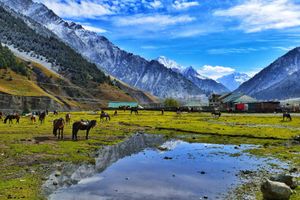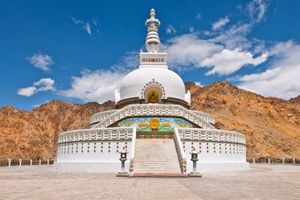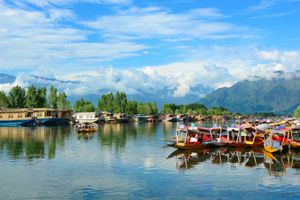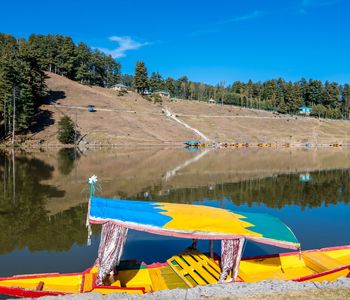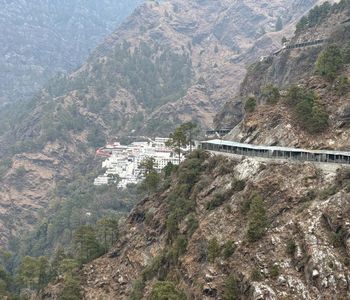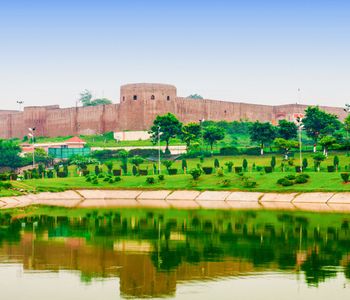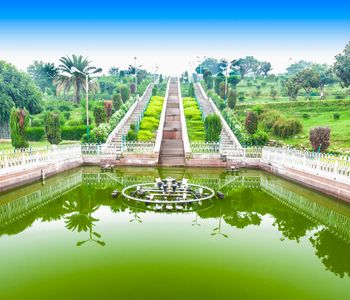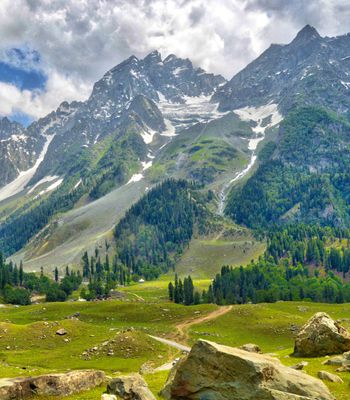Built in the Jammu and Kasmir region of Northern India, the Raghunath Temple is a collection of seven shrines dedicated to the main deity Lord Vishnu. Hindus and travelers visit this expansive property for history, prayer and a relaxing atmosphere. As you explore India's Hindu background, the Raghunath Temple offers artistic beauty, intricate masonry and documented history for your next vacation.
Diving Into the Temple's History
The first Dogra rulers built the temple complex between 1853 and 1860. Starting with Maharaja Gulab Singh, the ruler began construction on the temple until his death. Ultimately, his son Maharaj Ranbir Singh completed it by 1860. Overall, the seven shrines house hundreds of gods and goddesses in various forms. Overwhelmingly, Hindus pilgrimaging to this temple are praising the deity Lord Rama or Vishnu's avatar. Indeed, the temple's namesake is derived from Rama's other titles, including Raghunath.
Learning About the Complex's Layout
The complex has a total of seven shrines with residential buildings and open land surrounding it. Each spire has gold-plated accents on the interior, creating a grand view as you enter each shrine. In total, the shrines enclose nearly 300 gods and goddesses depicted on the walls. Also, several areas display lingams or sacred objects celebrating Lord Shiva. Countless paintings can be found throughout the property, too.
Throughout the complex, architectural details include brick masonry combined with finished plaster. A mixture of carved flowers and geometric shapes adds to the complex's beauty and history. Lastly, the main shrine's architecture reflects its Hindu roots, as the entrance faces east for prayer purposes.
Discovering the Library
Within the complex is a library that started several generations ago. Housing thousands of manuscripts, this collection has been preserved for historical purposes. Although the texts cannot be checked out like a modern library, the collection can be observed by curious visitors. For Hindu followers, these rare Sanskrit books and manuscripts are an important part of any pilgrimage. Today, the library aims to digitize these items for long-term preservation.
Planning Your Visit
The Raghunath Temple is just north of the Tawi River and Jammu's city center. Arrive at the temple by bus or railway. The Tawi Bus Stand, for example, is the closest transport stop. There are many lodging choices nearby, too.
Respectfully, wear modest clothing to the temple. It's considered a religious site, so follow any rules about removing shoes or turning off mobile phones. Overall, it might take about two to three hours to truly walk in and around this complex.
If you want to participate in prayer, aarti or daily worship occurs in the mornings and evenings. This Hindu celebration involves prayer and lamp rituals. Regardless of your religious background, attending an aarti is a unique experience.
Because the Raghunath Temple is centralized in the old city section of Jammu, lodging, food and shopping are a few steps away from the complex. Make a day out of your temple visit with local delicacies served at the nearby bazaar. Your visit to this union territory can be a calm and relaxing time as you start your visit early in the morning at Raghunath Temple.

